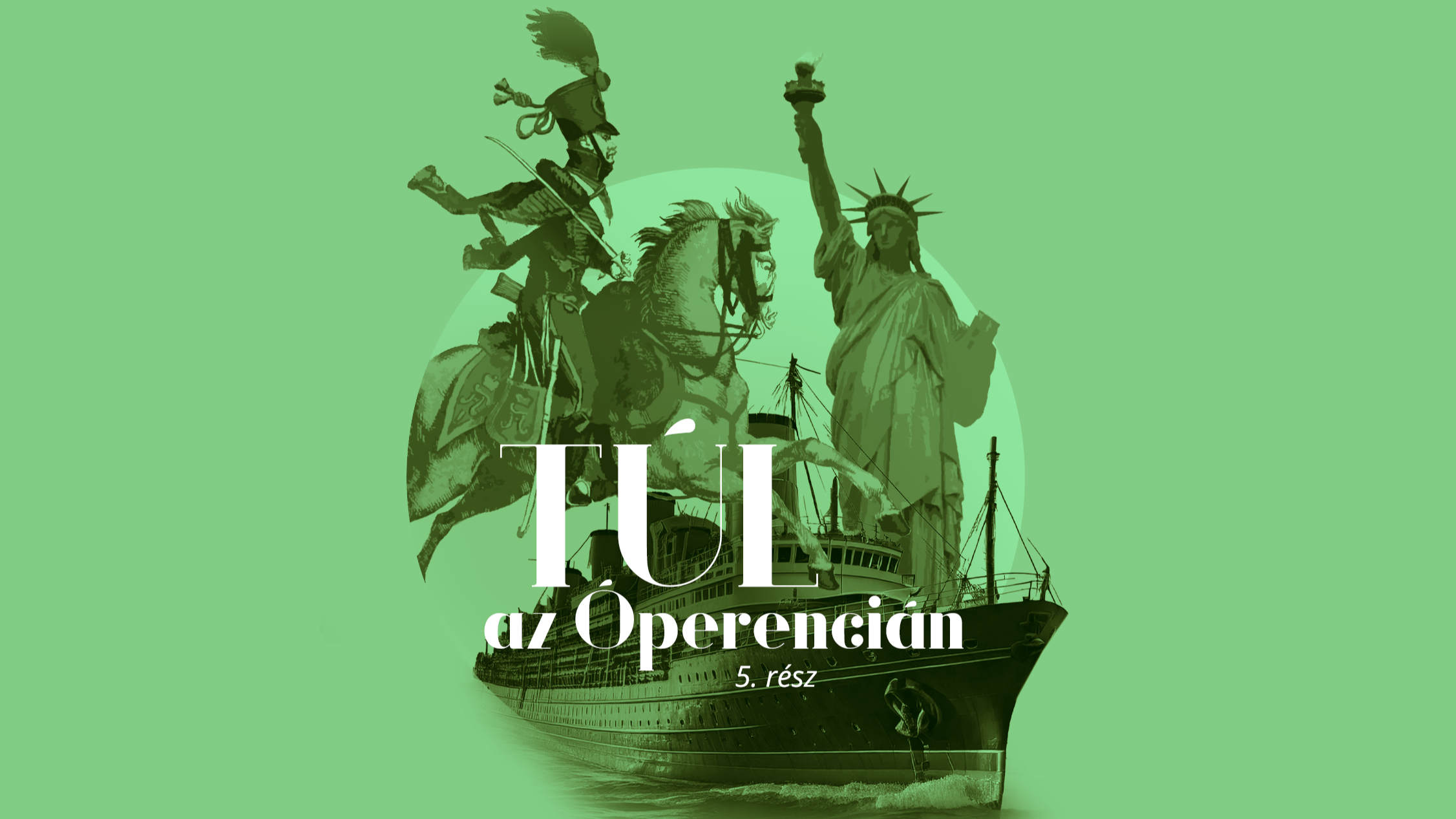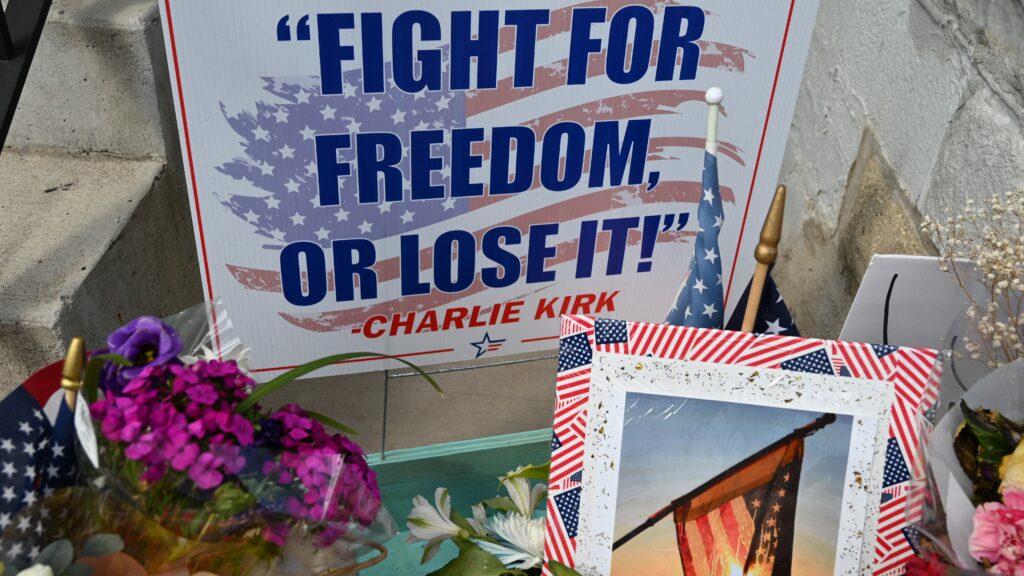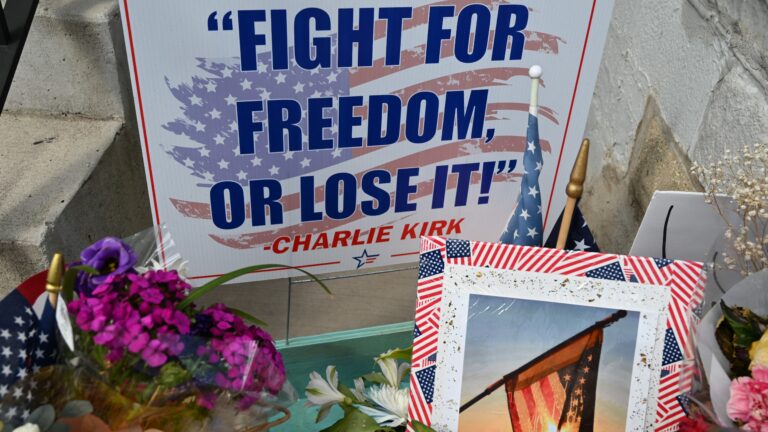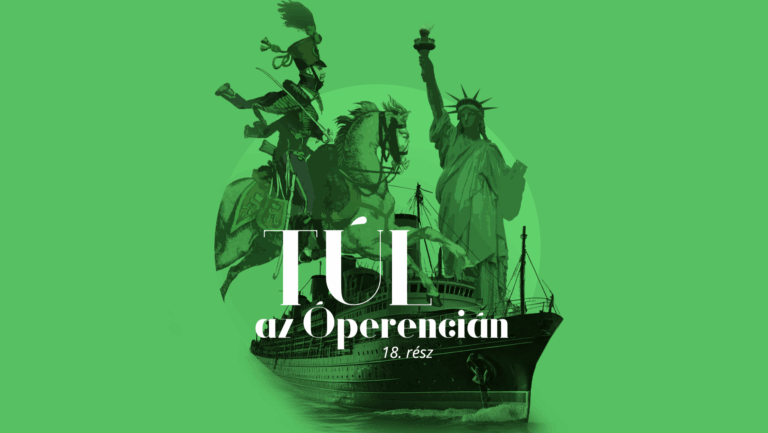The following is an adapted version of an article written by Lázár Pap, originally published in Hungarian in Magyar Krónika.
America—the new world, the land of opportunity, the land of the free. In the 19th and 20th centuries, hundreds of thousands of Hungarians left their former lives behind to cross the Atlantic and try their luck Far Far Away, that is, ‘Beyond the Óperencia’, as Hungarian fairy tales go. In its series, Magyar Krónika looks at the meeting points of America and Hungary through the Hungarian diaspora living in the US. In this part, let us look at Béla Estván, who emigrated to the United States in the 1850s. The man of Austrian descent pretended to be Hungarian in order to make it easier for himself to succeed in his new homeland. During the Civil War, he was involved in dubious arms shipments and procurement, and then wrote a book about his ‘heroic deeds’.
Béla Estván became well-known in America when his book War Pictures from the South, about his experiences during the Civil War, was published. For a long time, Hungarian historians uncritically used the claims of Estván, who, according to his own confession, was a freedom fighter who later emigrated to America, as a source. According to these claims, our ‘hero’ served the Hungarian king for 14 years. He was a cavalry captain in Radetzky’s army in Italy, then returned to Hungary upon hearing news of the 1848–49 Revolution, where Kossuth promoted him to the rank of colonel. After the fall of the freedom fight, he was forced into hiding and fled to England to escape reprisals, then crossed the ocean during the Hungarian governor-president’s tour of America. Unlike most Hungarian emigrants, he tried to put down roots in the south, in the state of Virginia. He participated in the Civil War as an officer in the Confederate Army and even played a decisive role in the battles of Bull Run and Fair Oaks—at least, this is the picture that emerges from his writings.
However, most of this information is based on lies. Estván was actually born in Vienna under the name Peter Heinrich and had no Hungarian ancestors at all. He probably lied about his origins to take advantage of the enthusiasm for Hungarians that characterized the early 1850s overseas. Incidentally, he could also hope for financial benefits from supporters of the Hungarian cause.
So, what do we know about the life of Béla Estván? His participation in the freedom fight is highly doubtful. He probably did arrive in America in the 1850s, as evidenced by the fact that he claimed to be Hungarian. In his book, he refers to himself as a ‘hero of Sevastopol’ and claims to have fought in the Crimean War. Hungarian emigrants in America did indeed make moves around this time: they wanted to send an expeditionary force to Crimea to join the conflict on the side of the Turks. This did not happen in the end, but we do know of officers who took part in the war on the side of the Ottoman Empire. We have no knowledge of Hungarians fighting alongside the Russians, but it is conceivable that Estván was not lying in this case. He dedicated the first edition of his book War Pictures from the South to General George B McClellan, former commander-in-chief of the Union Army, which is difficult to explain, since, as he claimed, he fought on the side of the Confederacy. Their acquaintance may date back to the Crimean War, where the American officer was present as an observer. In any case, even if Estván did participate in the Crimean War, he later returned to the United States and settled in Richmond to live in the same household with his wife and sister-in-law.
‘He probably lied about his origins to take advantage of the enthusiasm for Hungarians that characterized the early 1850s overseas’
‘(The so-called Count) lived off the earnings of the two ladies who lived with him in Richmond; both his wife and sister-in-law gave private lessons…He himself was a very handsome, cheerful man who could flawlessly play the role of an Austrian country nobleman,’ historian Hermann Schuricht, who wrote a book about Germans living in Virginia, said, describing Estván’s life.
We do not know much about his life before the Civil War, but the 1860 census data confirms that he lived under the same roof with his wife, 25-year-old Marie Estván, their child Mary, and his 22-year-old sister-in-law, Laura Lacey. His wife and her sister worked as French teachers, but we do not know if Estván worked at all. According to an American historian, he served in the Virginia militia and rose to the rank of colonel, and according to a less reliable source, he participated in the suppression of John Brown’s uprising against slavery. News of the Civil War reached him in Richmond, the capital of the South. In his book, he writes of his alleged military service as follows: ‘Circumstances led me into the Confederate Army—the main reason being that I had lived in the southern states for a long time.’
At another point, he emphasized: ‘By then, I had been living away from my homeland for 13 years, and caught up in the whirlwind of events, I found myself, almost against my will, serving in the ranks of a foreign army and fighting for a cause with which neither my head nor my heart could identify.’ The truth, however, is that he enlisted very willingly, as evidenced by several letters he wrote to Jefferson Davis, President of the Confederate States. He also requested permission and support to raise and equip two legions of foreigners. ‘I propose that two foreign legions be formed from volunteers from the states of Virginia, Tennessee, and Kentucky: one cavalry and one infantry, which, once formed, would be placed under the command of Brigadier General Wise.’ We do not know how this attempt ended, as he had no other official connection to the fighting in the southern states, and his name does not appear anywhere in the military records. We also have only partial information about his further career, but if even a fraction of it is true, then Estván committed outstanding fraud on an international scale.
After the Civil War, his name appeared in the columns of a Texas newspaper. According to the newspaper, with the permission of the aforementioned General Wise, he collected hospital supplies and provisions in Wilmington, North Carolina. He eventually embezzled thousands of dollars’ worth of supplies. The press was also sceptical about Estván. According to some articles, he opened a military school in Richmond after the war, so he was considered reliable. Still, others wrote that he was insignificant both as a historian and a military expert. Some sources reveal that he established a factory in Wilmington, North Carolina, with an entrepreneur named Louis Frölich to manufacture cavalry sabres and bayonets. They received several orders from the Confederate Army, but according to one officer’s complaint, three-quarters of the swords delivered proved to be of poor quality. The company soon went bankrupt because it failed to fulfil its contracts. Even the press was looking for those who had filed claims against Froelich&Estvan. The governor of North Carolina recalled the incident as follows: ‘Froelich realized that Estván was a thief, a despicable scoundrel, a frivolous good-for-nothing,’ thus he broke with his partner so that he could keep the state contracts.
‘Estván, after the ground began to burn beneath his feet, went north, where he pretended to be a deserter’
Estván, by his own admission, fought for 18 months for the independence of the South, but eventually withdrew due to yellow fever. Hermann Schuricht, however, reported that Estván ‘gave the impression that he had set up a cavalry regiment in North Carolina and then received authorization from the procurement office to purchase the necessary equipment,’ but then sold the supplies and pocketed the money. He also mentioned that Estván, after the ground began to burn beneath his feet, went north, where he pretended to be a deserter. He marched into Washington in a Confederate uniform and even met with President Lincoln—at least according to Schuricht. What is certain is that he left the United States in 1862 and travelled to England, where he wrote his work War Pictures from the South. However, perhaps the most exciting part of the life of the adventurer, believed to be Hungarian, was still yet to come…
You can read about Béla Estván’s further adventures in Part II.
This article is based on István Kornél Vida’s book From Világos to Appomattox.
Read the previous parts of the series below:
Click here to read the original article.







